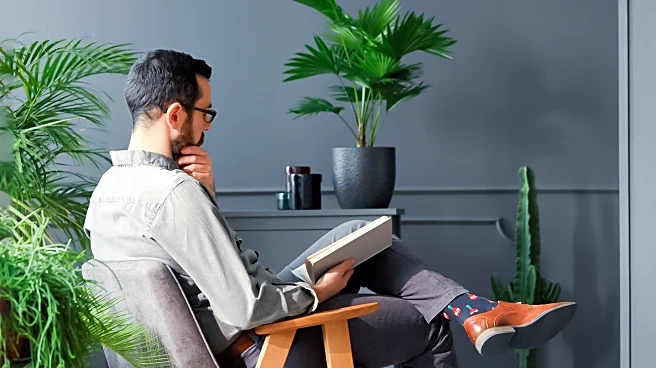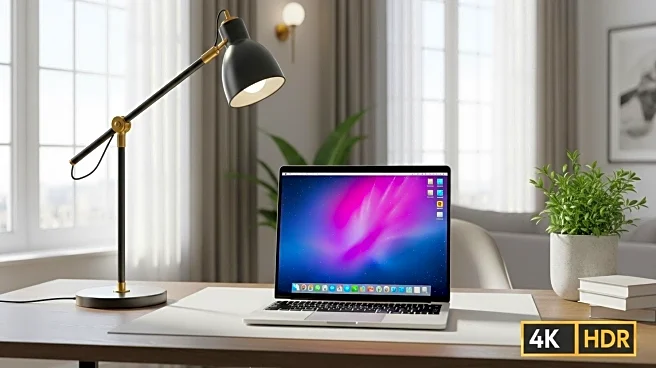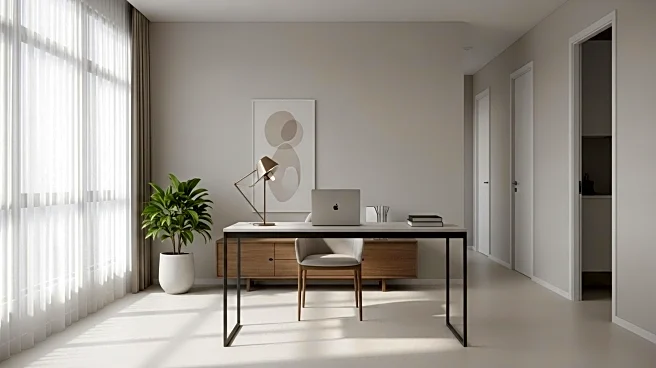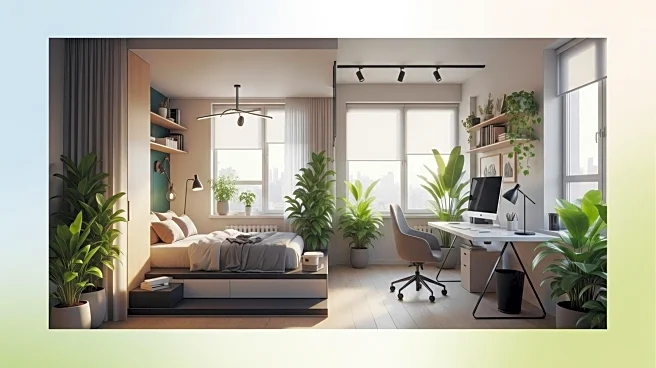What is the story about?
What's Happening?
A new trend among young tech founders is emerging, characterized by minimalist living arrangements within hybrid workspaces. These founders, often in their 20s, are opting for live-in offices where they sleep on air mattresses and maintain minimalistic environments. The phenomenon is driven by the influx of venture capital funding into AI startups, yet many founders choose to keep their living spaces sparse, reminiscent of Steve Jobs' simple lifestyle in the 1980s. The setup often includes shared spaces for work and social activities, with founders like Regina Lin of ThirdLayer living in a loft previously occupied by another startup. The loft features a communal kitchen and common area, where social videos are filmed and overnight guests are accommodated.
Why It's Important?
This trend reflects a shift in lifestyle preferences among young entrepreneurs, prioritizing work and community over traditional home comforts. It highlights the influence of venture capital in shaping living arrangements and underscores the cultural impact of tech startups on urban living. The minimalist approach may appeal to investors who value frugality and focus, potentially influencing funding decisions. Additionally, these hybrid living models could affect local housing markets, as they may lead to increased demand for live/work spaces, impacting real estate development and urban planning.
What's Next?
As this trend continues, it may prompt changes in urban housing policies to accommodate hybrid living models. Real estate developers might explore new designs for live/work spaces to cater to the needs of tech entrepreneurs. Additionally, the cultural shift could inspire other industries to adopt similar minimalist and community-focused living arrangements. Stakeholders such as city planners and housing authorities may need to address potential challenges related to zoning and community integration.
Beyond the Headlines
The rise of hybrid living models among tech founders could have broader implications for societal norms around work-life balance and sustainability. These arrangements emphasize community and shared resources, potentially fostering collaboration and innovation. However, they may also raise concerns about gentrification and the preservation of neighborhood heritage, as traditional living spaces are transformed to accommodate new lifestyles.
AI Generated Content
Do you find this article useful?













